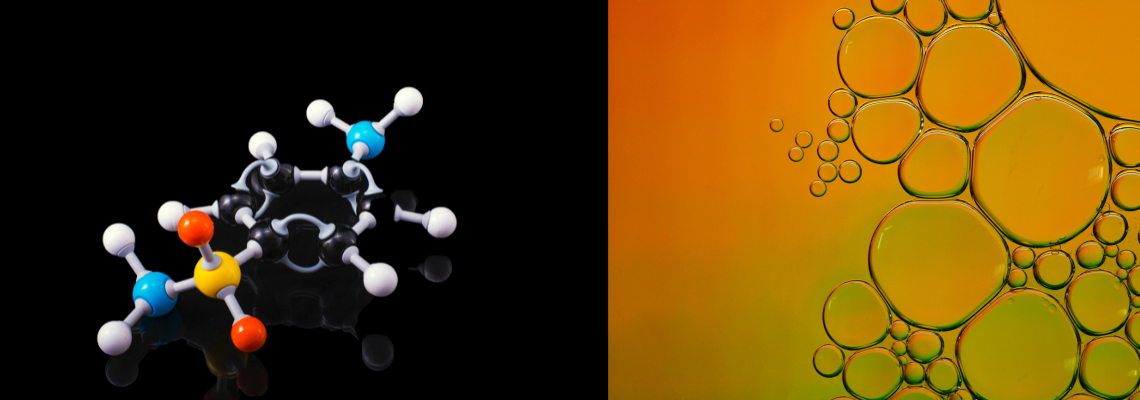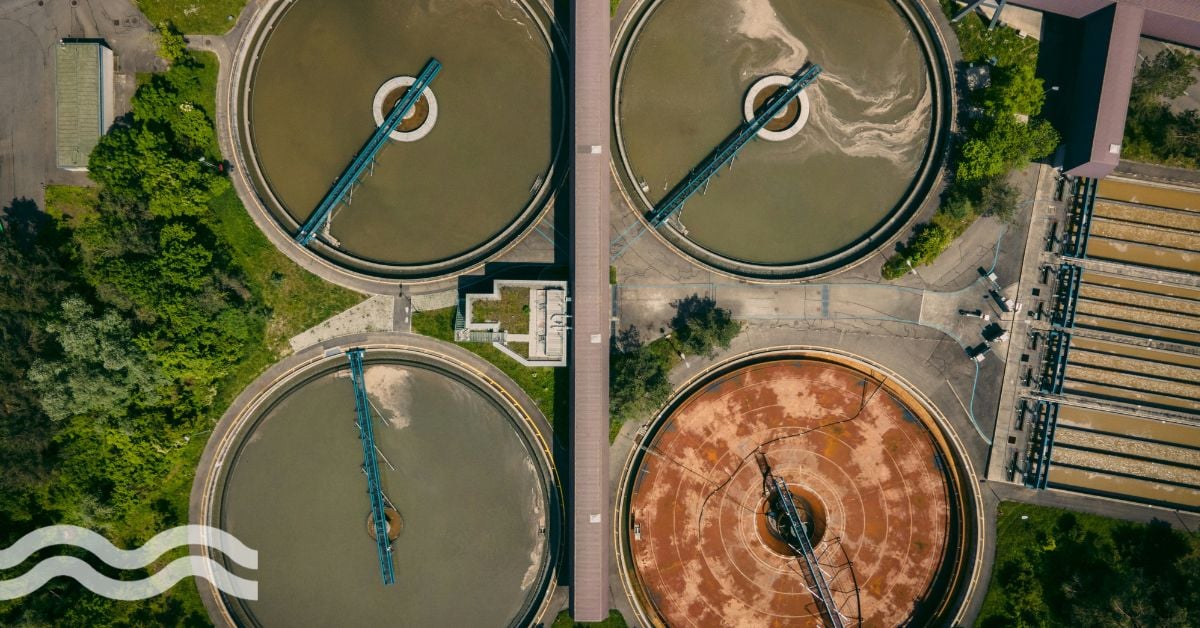Essential Guide to Per- and poly fluoroalkyl substances (PFAS)
Table of Contents
- Perfluoroalkyl and polyfluoroalkyl substances (PFAS)
- What are PFAS?
- PFAS in water and the environment
- PFAS in drinking water: what are the latest findings?
- How to remove PFAS from water
- PFAS water filters: what are the available options?
- What is the latest EPA drinking water stance on PFAS?
- The future
Perfluoroalkyl and polyfluoroalkyl substances (PFAS)
PFAS chemicals have become a growing environmental concern in recent years due to their potential for polluting water, air, soil, and other natural resources.
As the name implies, these chemicals are found in many everyday items like non-stick cookware, carpets, clothing treatments, firefighting foam and food packaging.
PFAS not only enters the environment but can also accumulate in living organisms - meaning we may be exposed to them through our diets or even by simply being near areas where these materials have been used.
In this guide, we will discuss what PFAS are and how they're making their way into both the environment and humanity – as well as what can be done to avoid them or reduce exposure where possible.
What are PFAS?
PFAS, also known as perfluoroalkyl and polyfluoroalkyl substances, are man made chemicals that have been used in a variety of industrial manufacturing processes since the 1950s. They are often referred to as ‘forever chemicals’ because they can take hundreds of years to decompose and they do not easily break down in soil or water. These chemicals have been found in our environment, including drinking water sources, rivers and lakes, soils and sediments.
Because of their persistence and mobility in the environment, PFAS chemicals can be toxic to both humans and animals when ingested. As a result, research is now being conducted to determine the extent of our exposure levels to these chemicals as well as to find ways to reduce our contact with them.
PFAS in water and the environment
PFAS are making their way into our water sources through various channels.
The most common is through wastewater treatment plant discharges. Wastewater treatment is usually not sufficient to remove all PFAS chemicals, so a large portion of wastewater discharged into rivers and streams will contain them.
PFAS can also enter the water supply in other ways. Industrial factories often use PFAS chemicals for various processes that may release those substances into local waterways. Even everyday products like nonstick cookware or cleaning supplies can contain PFAS contaminants which, if dumped down sinks or other drains, can make their way into water sources.
PFAS also seep into the environment through landfills and sewage treatment plants. The excessive amounts of contaminants released by industries into our environment over the years have posed severe risks to the health of surrounding ecosystems and human populations.
In addition to water contamination, PFAS can also enter the environment through airborne contamination. When these chemicals are used in firefighting foams or industrial processes, they can enter the atmosphere and eventually settle on the ground or in water sources. Once they are present in the environment, they can persist and accumulate.
Several studies have been conducted on the presence and prevalence of PFAS contamination in our water and environment. These studies have found that PFAS are present in water sources across the globe, with high levels of contamination found near industrial facilities where PFAS are used. The Forever Project recently released a new map showing the extent of Europe's PFAS.
The investigation revealed that PFAS chemicals contaminate more than 17,000 sites across the continent. An additional 22,000 sites are presumed contaminated due to current or past industrial activity.
PFAS in drinking water: what are the latest findings?
PFAS are more widespread in drinking water sources than previously thought. A US Environmental Working Group (EWG) study found PFAS in the tap water of 43 states, affecting an estimated 110 million Americans. Michigan, New Jersey, North Carolina, Alabama, and California reported the highest PFAS levels.
Additionally, a BBC study, in collaboration with the University of Greenwich and Manchester Metropolitan University, found PFAS levels surpassing European safety standards in nearly half of the 45 tap water samples taken in England. Some 25 samples contained PFASs, and four had levels that exceeded 10ng/l, which, under the current guidelines, requiring consultation with local healthcare professionals. Nearly half of the samples surpassed the European Food Standards Agency tolerable limit of 2.2ng/l.
Studies link PFAS exposure to health issues such as thyroid disease, liver damage, weakened immunity, and cancer. Adverse effects vary based on exposure level, duration, PFAS type, and individual susceptibility. Even low-level PFAS exposure can be harmful.
A CDC study found PFAS in 98% of tested participants' blood samples in the U.S., highlighting the widespread exposure and potential danger PFAS poses.
PFAS exposure is more common in certain professions, including firefighters, where PFAS is present in firefighting foam and can lead to inhalation and skin exposure. A study by the National Library of Medicine found that firefighters had higher levels of PFAS in their blood than the general population. The higher exposure level heightens concerns about the long-term effects of PFAS in individuals and the environment.
A 2018 study conducted by the University of Exeter found links between PFAS exposure and decreased sperm quality and mobility in men. The study concluded that exposure to these chemicals could negatively impact the chances of conception for couples.
Despite the uncertainty surrounding the long-term health effects of PFAS exposure, the Environmental Protection Agency has set a health advisory level of 70 parts per trillion, which is said to minimize the risk of exposure.
How to remove PFAS from water
Removing PFAS from water has been challenging for many communities across the world. Methods of removal involve activated carbon filtration, where charcoal is used to capture the molecules of PFAS particles in the water. This method can reduce PFAS concentration by up to 90 per cent.
Additionally, other methods such as chemical oxidation and membrane treatment are being explored as means to remove PFAS from our water systems safely and effectively. Utilising increased knowledge about how best to remove PFAS from water, cities and counties have begun testing different methods in the hope of making drinking water clean and safe for the future.
PFAS water filters: what are the available options?
Heavy water using industries can include food, paper, chemicals, refined petroleum, or primary metals. Below is a list of how water is used within several different industries.
1. Activated Carbon Filtration
Activated Carbon Filtration is one of the most commonly used methods for removing PFAS from water. This process involves using activated carbon to absorb the PFAS, removing it from the water. Activated carbon filters can be installed in water treatment systems or on individual taps.
2. Reverse Osmosis
Reverse Osmosis is another method that can be used to remove PFAS from drinking water. This process involves passing water through a semi-permeable membrane that blocks contaminants like PFAS.
3. Ion Exchange Resins
Ion Exchange Resins are another way to remove PFAS from water. These resins can be used to remove specific contaminants from water by exchanging ions with the contaminants, removing them in the process. Ion exchange resins can be used in water treatment plants or on individual taps.
4. Ultrafiltration
Ultrafiltration can be used to remove PFAS from water. This process involves using a membrane to filter out contaminants like PFAS from the water. Ultrafiltration are commonly installed in larger water treatment plants.
5. Distillation
Finally, distillation. The process of distillation involves boiling water and collecting the resulting steam. The steam is then condensed back into water, leaving behind the contaminants that were in the original water. While distillation can be an effective way to remove contaminants like PFAS from water, it can be costly and time-consuming.
What is the latest EPA drinking water stance on PFAS?
Under the Biden-Harris Administration, the United States Environmental Protection Agency (EPA) has accelerated the pace of research and actions needed to tackle the PFAS crisis in the country.
In March 2023, it proposed to establish legally enforceable levels for six PFAS known to occur in drinking water, which are laid out in a PFAS Strategic Roadmap. The proposals are currently open for consultation.
In February 2023, the EPA announced the availability of $2 billion from President Biden’s Bipartisan Infrastructure Law to address emerging contaminants, including PFAS, in drinking water across the country. This investment, which is allocated to states and territories, will be made available to communities as grants through EPA’s Emerging Contaminants in Small or Disadvantaged Communities grant programme. These funds will promote access to safe and clean water in small, rural, and disadvantaged communities while supporting local economies.
In January 2023, the EPA proposed a rule that would prevent anyone from starting or resuming, without a complete EPA review and risk determination, the manufacture, processing or use of an estimated 300 PFAS that have not been made or used for many years, known as ‘inactive PFAS.’.
In the past, these chemicals may have been used in many industries in a variety of ways, including as binding agents, surfactants, sealants and gaskets, and may also have been released into the environment.
Finally, the EPA has released a new interactive webpage, the PFAS Analytic Tools, which brings together multiple sources of information on PFAS in one place. These tools will help the public, researchers, and other stakeholders better understand potential PFAS sources in their communities.
The future
PFAS chemicals are a growing environmental concern that are causing negative effects on the environment and our health. For those looking to reduce their exposure, it’s important to be aware of where PFAS are found and how they might be entering our everyday environment. Furthermore, more research needs to be conducted in order to better mitigate the potential human health threat posed by these chemicals.
Should we also be focusing on destructing PFAS and not just on mitigating their effects? Italian multi-national, De Nora, and destruction specialists, Aclarity, recently signed a memorandum of understanding (MoU) to treat and mineralise PFAS across the US, for example.
Aclarity announced it had successfully destroyed PFAS chemicals at a customer's site, at volume, in landfill leachate, a primary source of PFAS contamination in the environment in January.
The full-scale pilot demonstrates that PFAS can be destroyed at full-scale capacity for large operations.
The modular nature of the technology allows for destruction of low volume streams and even those requiring upwards of millions of gallons per day to be treated.
Until now, PFAS destruction technologies have been relegated to the laboratory, or to batched processing. Yet most wastewater treatment processes need a continual-flow solution – a batch process would interrupt facility operations.
Third party lab results using standard ASTM method D7979 confirmed Aclarity destroyed PFAS compounds in landfill leachate continuously at a centralized waste treatment facility at levels of greater than 1,000 ng/L to below 10 ng/L. The equipment operated continuously for four weeks using very little energy: less than 100 Watt-hr/gallon.
These results come at a time when the US EPA is proposing to designate PFOA and PFOS as hazardous substances under CERCLA (the Superfund act), which would require PFAS disposal or on-site treatment at landfills, more than tripling operating costs for operators. With the US EPA looking to change its standards for PFAS destruction, could we see more organisations deploying PFAS-destroying technology at an industrial scale?
Raising awareness and making informed decisions about PFAS-based products are essential steps to significantly reduce exposure, ensuring safer, healthier environments for everyone.
We promise never to send you spam and you can unsubscribe at any time!



.jpg?h=628&iar=0&w=1200)